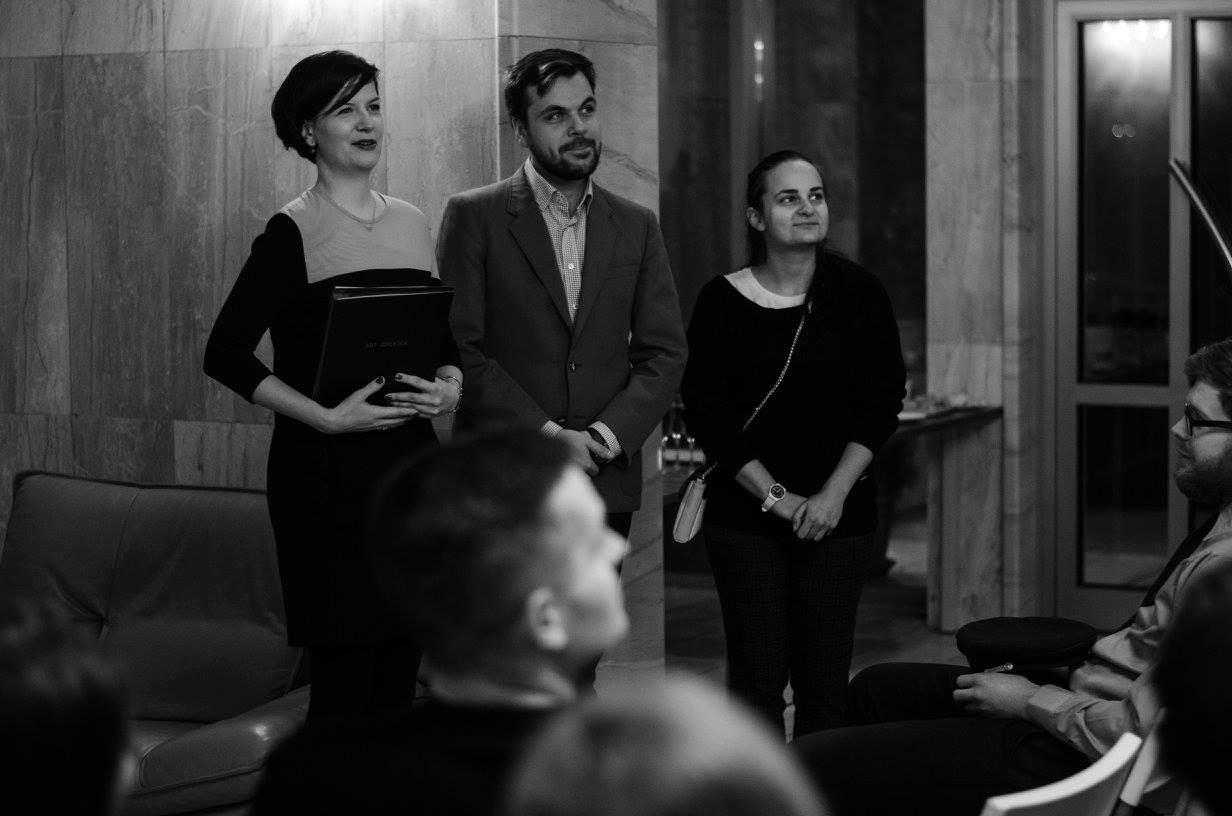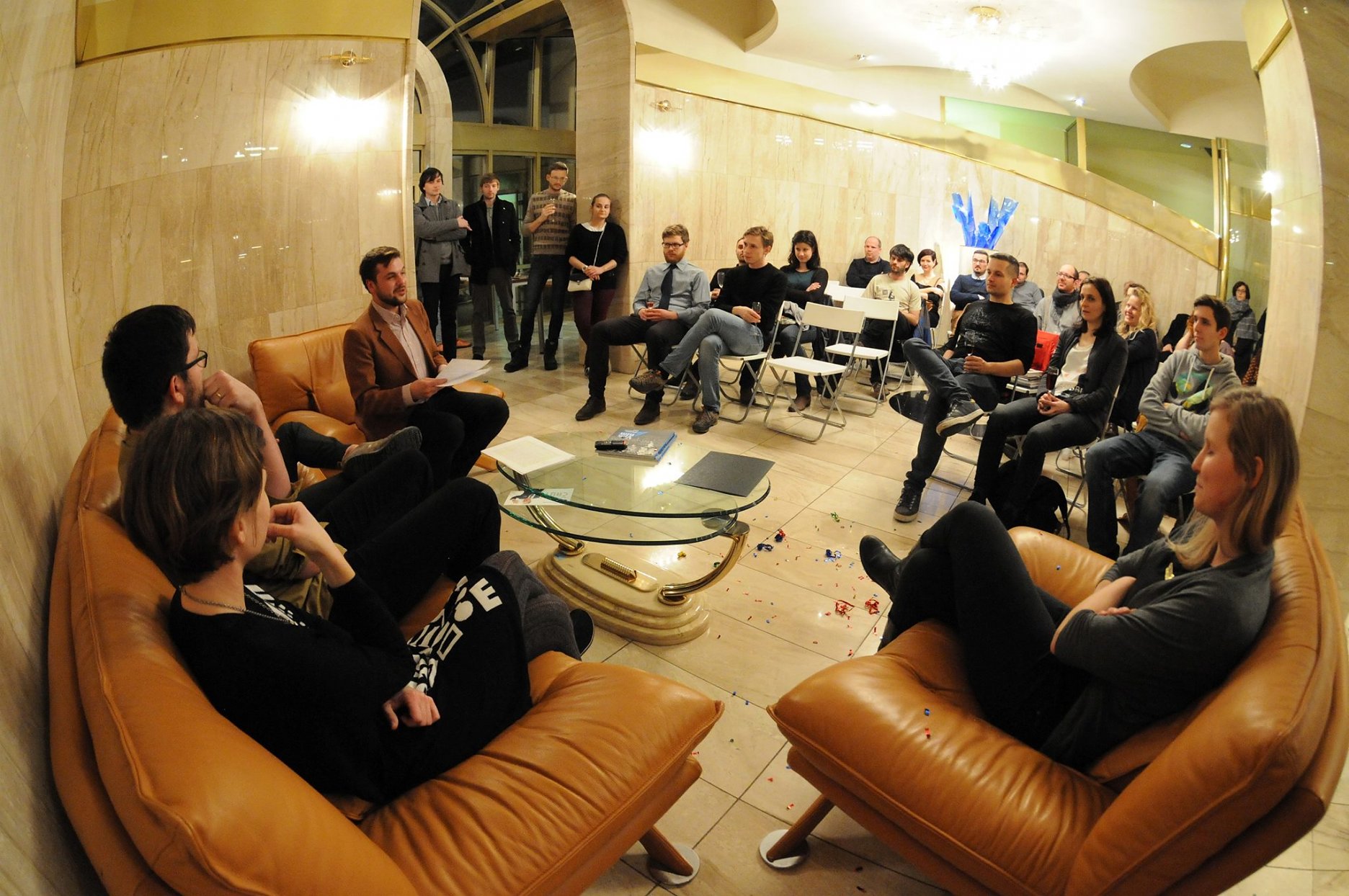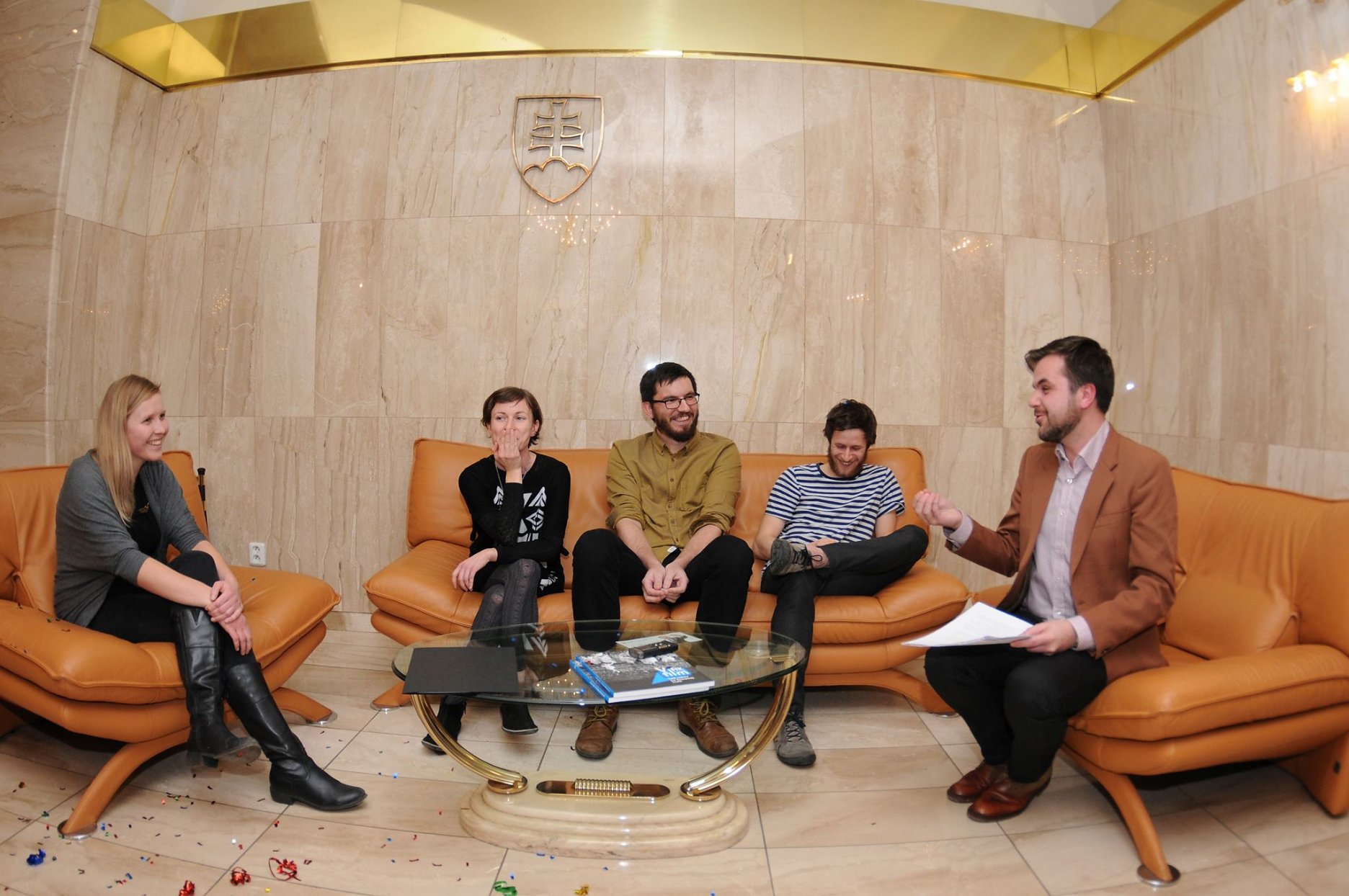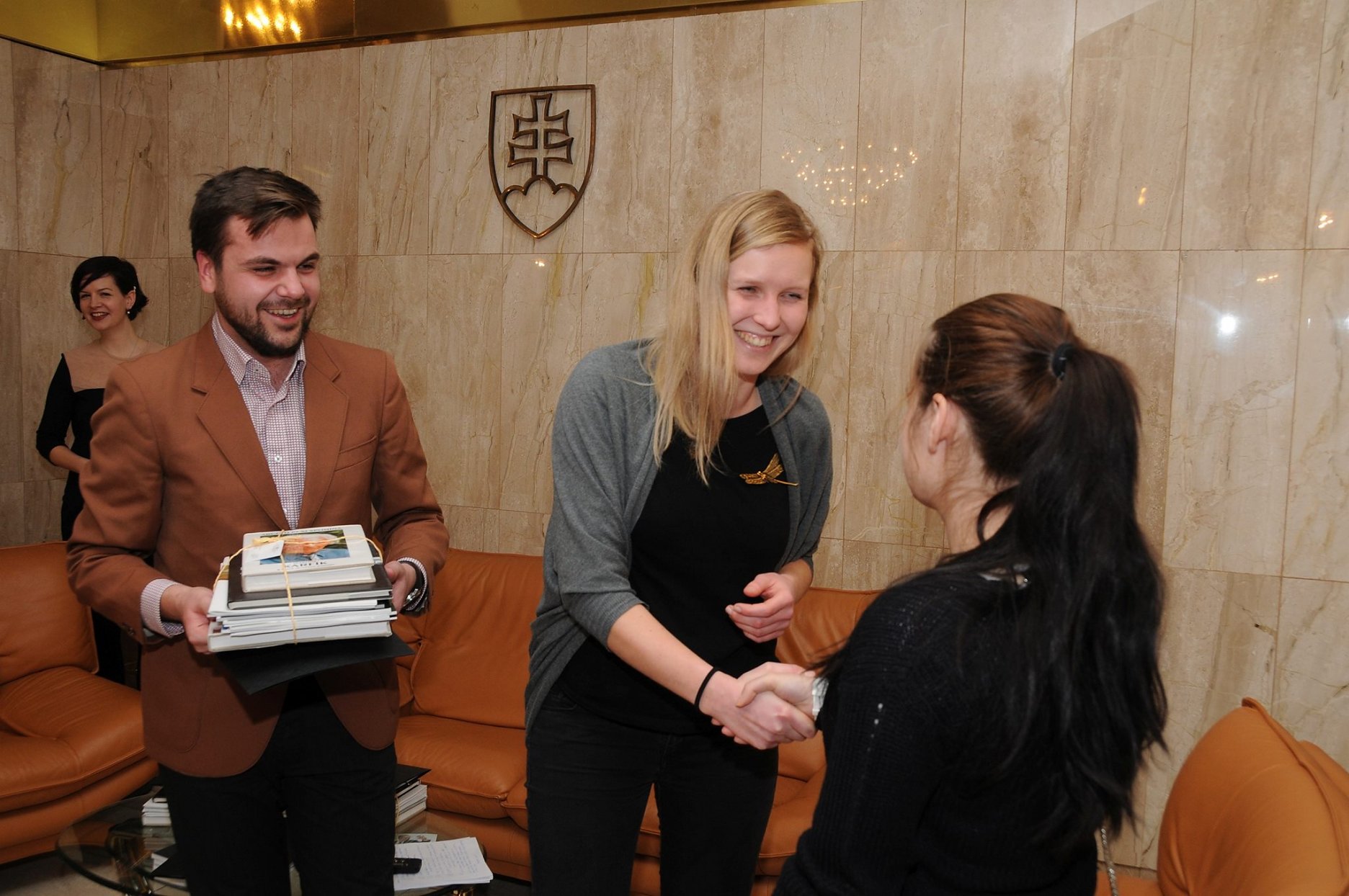Advertorial
Moderné plynové technológie: Efektivita a inovácie pre 21. storočie
Sumarizácia najdôležitejších inovácií, ktoré redefinujúcich využitie tohto energetického zdroja.
Utesňovanie spodných stavieb pomocou hydro-aktívnej fólie AMPHIBIA.
AMPHIBIA 3000 GRIP 1.3 od spoločnosti ATRO predstavuje modernú hydroizolačnú technológiu, ktorá spája vysokú odolnosť,...
Dekarbonizácia individuálneho vykurovania domácností – Green Deal evolučne a nie revolučne
Ambiciózne plány EK narazili na ekonomické možnosti domácností v jednotlivých členských štátoch –...
Minimalistické dvere IDEA – technická precíznosť a čistota prevedenia
IDEA DOOR od spoločnosti JAP prináša do interiéru čistý minimalistický vzhľad vďaka bezrámovému riešeniu a precíznej...
Schell Vitus – osvedčené riešenie pre sprchy a umývadlá vo verejnom sektore s viac ako desaťročnou tradíciou
Nástenné nadomietkové armatúry Vitus sú mimoriadne vhodné pre rýchlu a efektívnu...
Kompozitné okná predstavujú súčasnosť a budúcnosť
Okenné profily z kompozitného materiálu RAU-FIPRO X od spoločnosti Rehau sú v porovnaní s tradičnými plastovými profilmi mnohonásobne...
Myotis - stoly 2025
Najnovší sortiment stolov pre zariadenie interiérov...
Priemyselné sklenené priečky Dorsis Digero: svetelné rozhranie pre moderné interiéry
Spojenie moderného dizajnu, funkčnosti a svetla do harmonického architektonického prvku.
Význam prirodzeného svetla pre moderné a flexibilné pracovné prostredie
Kancelárska budova Baumit v slovinskom Trzine prešla premenou na moderné a udržateľné pracovisko. Architekti kládli dôraz...
Konferencia Xella Dialóg predstaví novinky a trendy v stavebníctve
Mottom šiesteho ročníku on-line konferencie odborníkov Xella Dialóg je Efektívny návrh budov 2025+: zmeny a riešenia
Murovací robot WLTR stavia svoj prvý dom na Slovensku
Robot WLTR predstavuje moderný prístup k murovaným konštrukciám. Vďaka automatizácii dokáže rýchlo, presne a bezpečne realizovať...
Nová éra bezpečnosti s I-tec Secure od Internorm
Okrem bezpečnosti majú okná aj elegantný vzhľad, pretože nie sú viditeľné žiadne uzamykacie časti kovania.
Skryté zárubne JAP – intenzívny zážitok z bývania
Dvere MASTER v skrytej zárubni AKTIVE je možné vyrobiť až do výšky 3 700 mm
Tienenie namiesto klimatizácie
Internorm stavia na energetickú efektívnosť a inteligentné tieniace riešenia.
BigMat International Architecture Award 2025 - vybrané diela
Slovensko vo výbere zastupuje šesť realizácií.
Píše ti architektúra? (1)

Spolok architektov Slovenska v spolupráci s British Council a občianskym združením Archimera organizoval už piaty ročník súťaže esejí o architektúre s témou: Kde sa stratili vízie?. Cieľom súťaže je vzbudiť najmä u mladých ľudí záujem o architektúru, priblížiť im problematiku architektúry a súčasne získať ich názory na budúce formovanie slovenskej architektúry, urbanizmu a teórie.
"Humanity needs dreams to endure misery, even if just for an instant." / "Ľudstvo potrebuje sny aby vydržalo trápenie, aj keď sú len okamihom“
O. Niemeyer
Anotácia témy:
Architektúru od jej vzniku sprevádzajú vízie, sny budúcnosti, predstavy možného a konceptuálne podoby architektúry. Minulé spoločenské posuny boli vždy sprevádzané obrazmi budúcej architektúry. Problémy bývania, zdravia, rozvoja miest v 20. storočí, mnohé z toho sa podarilo riešiť aj vďaka architektonickým víziám, ktoré sa stali skutočnosťou. Pravda, dejiny nám ukazujú tiež zlo dláždené snami, ktoré sa zmenili na nočnú moru. Je však správne, keď sme pod tlakom vlastnej histórie, racionalizácie a stavebného pragmatizmu prestali architektúrou snívať o lepšom svete? Témou tohtoročnej súťaže píše ti architektúra? je preto otázka tvorby obrazu zajtrajška. Je dobré snívať a prinášať architektonické vízie? A ak, tak prečo dnes veríme snom menej ako architekti minulého storočia?
Vo štvrtok 3. decembra 2015 sa v priestoroch Balassovho paláca stretla hodnotiaca porota, ktorá vybrala z celkového počtu 19 registrovaných súťažných esejí víťaznú a udelila jednu finančnú a 3 vecné ceny.
1. cenu získala Tereza Grešková za esej Beating the Apocalypse (odmena 300€)
Vzhľadom na kvalitu a atraktivitu príspevkov sa porota uzniesla oceniť aj ďalšie tituly (práce ocenené vecnými cenami nakladateľstva Spolku Architektov Slovenska):
Lívia Gažová: A čo na to architektúra?
Matúš Antolík: V malých dejinách
Tomáš Boroš: Prie-STORY
Porota zasadala v zložení: Nina Bartošová, historička architektúry (FASTU), Zuzana Duchová, kunsthistorička a umelecká kritička (salonik.sk), Miroslav Hrdina, historik architektúry (držiteľ ceny prof. Martina Kusého za rok 2015), Peter Szalay, historik architektúry (ÚSTARCH) a Martin Zaiček (FASTU/ Archimera).
Piaty ročník súťaže priniesol množstvo zaujímavých pohľadov mladej generácie autorov na tému pozície architektonických vízií v súčasnej tvorbe. Je zrejmé, že v dnešnom architektonickom diskurze, tvorenom v postmodernom prostredí je priestor na veľké architektonické sny obmedzený. Mnohí autori sa zamýšľali nad vzťahom ekonomických a spoločenských faktorov, ktoré sú priam prekážkou pri tvorbe architekta. Je však povzbudivé, že aj napriek tomu nepovažujú vizionárstvo v architektúre za mŕtve. Organizátori sa uplynulý ročník rozhodli otvoriť súťaž aj nie slovensky píšucim autorom, preto bolo možné posielať príspevky aj v anglickom jazyku. Organizátorom súťaže je o.z. Archimera v spolupráci so Spolkom architektov Slovenska. Finančná odmena bola poskytnutá vďaka Fondu architekta Emilla Belluša.
Dňa 12. januára 2016 sa uskutočnilo v salóniku Hlavnej stanice v Bratislave oficiálne ukončenie súťaže a odovzdávanie cien s diskusiou.
Nižšie si môžete prečíta víťaznú esej v originálnej anglickej verzii. Ostatné ocenené práce aj s hodnotením poroty budeme publikovať na pokračovanie.
Víťazný príspevok s názvom Beating the Apocalypse od Terézie Greškovej zaujal porotu prehľadnou štruktúrou, sebavedomým uvažovaním s presahmi k filozofii a snahou o nachádzanie riešení analyzovaného problému. Pozitívne bola práca vnímaná aj vďaka zvládnutej štylistike, vnútornej logike textu. V neposlednom rade zaujala aktúalnosť témy. Autorka Tereza Grešková priniesla nové a pútavé poznatky, otvorila témy, ktoré nie sú v slovenskej odbornej tlači bežné. Presahovala hranice architektonického diskurzu, čo bolo vzhľadom na tohtoročnú tému súťaže žiadúce.
Víťazná esej:
Beating the Apocalypse (Tereza Grešková)
Visions of future are not represented by utopia anymore but by solid scientific research, which not only predicts but summarises our present situation through collected data. Subjective or objective dreaming about far away future, which could appear in someway or other, has no more value in our world of infinite resources and technologies. Because ex-actly these technologies and scientific progress that is happening here and now allows us to not only predict but also change the vision of seemingly devastating future.
repositioning of an architect
Collecting data and using scientific progress requires architects to become scientists, and having overview on not only recent social,cultural and political situations but also environ-mental, ecological and technological status. Future requires us as architects not collaborating with architects but instead creating cross disciplinary cooperations with biologist, chemists, molecular biologist, bioengineers, robotics engineers, and many other experts. This kind of alienation of a role of architect will help us to visualise future more precisely and elaborate more hope giving trustful visions. As Liam Young said: “The point of futurology and speculative fiction is also to explore role of architect itself - to reposition architect as a cultural agitator, one who imagines entire fu-ture scenarios, not just discrete buildings,” (1) only then can architect fully use implications and consequences of today’s trends towards imagining the future.
Architects will never stop dreaming of better future, but nowadays in order to be able to counterpose the image of seemingly unavoidable apocalypse, the depression of our society, they need to become an analysts of the current situation, find matter of disappointment, and give us a hope towards future through their progressive solutions. The “four riders of the apocalypse” are accordingly to Slavoj Žižek (2) comprised by the worldwide ecological crisis; imbalances within the economic system (forthcoming struggles over raw materials, food, water); biogenetic revolution (reduction of humans to manipulable machines); and explosive growth of social divisions. Now every architect might find strangely fascinating problem, that is one of many driving us towards dystopian future, problem that he would address through architecture and become a mediator between all the professions and experts that are relevant in order to make some positive progress.
why Alice in Wonderland got replaced by Hunger Games
These four main reasons as Žižek points out and many other are truly signalling not very happy forthcoming for us, but what is honestly making us loosing our hope is that we are truly disgusted from each other.
When you loose the hope and surrender to depression the only story that seams to be real and believable must be dystopian. No wonder dystopian literature and movies are nowadays more popular then beautiful
utopian visions of how beautiful may our world full of multilayered overground traffic, robots and nature unaffected by technology look like in 200 years. Because it is not real. It is not believable. And Alice falling through a rabbit hole into a fantasy worldnot by a chance called Wonderland as well as parallel dimension of Tomorrowland and many others are a beautiful stories. But they will always remain a fairy tails we had a good time watching / reading / looking at and then life goes on and this kind of story will never become part of our lives more then as an amusement.
Dystopia just seems to be so real and we cannot help ourselves - not because watching
children killing each other in mind twisted game is something we want to look at, but because descending of our society and doubting of our humanity seems to be already happening. Just to mention how terrified we are from few migrants and refugees escaping from war zones. But what if climate change makes northern Siberia more habitable and appropriate for agriculture, while large parts of subSaharan Africa become too dry to support a large population? How will the redistribution of people be organised? When events of this kind happened in the past, the social transformations were wild and spontaneous, accompanied by violence and destruction. (3) Now we maybe can’t make a definitive stop to global warming but we definitely can slower it down, reduce the impact of ecological crisis, increase air quality and find a ways to make uninhabitable areas of our planet liveable and accessible for those who need it.
Most if not all dystopias are focusing on cataclysmic decline in society, but at the same time are surrounded with no nature. Why is that? As if decline of society went hand in hand with disappearing of nature. But dystopia just draws attention to real world issues, resulting in a situation, what if all went wrong, or just slowly continued on as it goes from this point, where we are now, and thats why we believe in it. When society has already became very much aware that, utopia, a world with no crime and no poverty is not only unreal but will never happen. How can we as architects bring in new positive thinking? Of course utopia is and will stay forgotten and there is no coming back to hippie pinky sunglasses.
nature does not exist
The “nature” most of environmentalists talk about is gone and the harmonic, romanic visi-on of nature presented to us is naive, never existed and needs to be reconsidered. Nature does not exist anymore. The wilderness, the untouched, unseen nature does not exist anymore.
We live world of second nature (all the land around us is transformed, changed by a hu-man) and third nature (the nature, park or a garden, we try to harmonise, and make it look more beautiful and harmless than it could be - a sort of domesticated nature) and the next nature that we create consciously (genetically modified food and animals, manufactured landscapes) and unconsciously (deformation of animals by plastic attached to them that grow with and into their bodies changing their natural physiology). What is the next step in evolution of nature is clearly in our hands. As we evolve nature evolves with us. As well as we, nature is a commodity that, while valuable, is yet in a primitive state of development. It will be a better thing all around when bioengineering has refined the landscape so that people no longer need to coax proper behaviour from its component parts. Someday you will be able to unscrew your trees, rotate your hedges and shampoo your lawn. (4) But what other natures we will or could create and what other natures we want to and need to create in order to save that is valuable and necessary for us should stay apart.
logical positivism
Collectively gathering data, learning from each other, can help us to find answers to grea-test environmental issues and ever more excessive pollutions of every kind and help to create a positive future.
We can also find similar thinking appearing in last year between sci-fi writers referring to new movement “solarpunk” as a contraposition to dystopia. It is kind of a new movement based on defeating darkness. Authors wisely search answers in renewable energy sources (solar) and are very aware that vision of a beautiful future is nowadays a rebellion (punk).
Searching for answer not in a traditional “ecological” and “sustainable” but exploring the use of technology to maintain a natural environment, by creating a robotic ecosystem, combining technology and nature without harming each other but supporting each other. Creating environments that would behave half natural, half mechanical while both would be dependent on each other. To understand how could biology and technology become increasingly indistinguishable is presented to us for example through work of artists Cohen Van Balen. Their art pieces precisely address exactly those issues we as architects should get inspired in sake of better future.
Yet there are many architects, artists and visionaries start to use technology to visualise and interpret data derived from the world around us and create innovative and sustainable responses to the rapidly changing global landscape, and those further our intellectual cu-riosity. As studio Tomorrow's Thoughts Today invented fantastical creatures "CO2 scrubbers” that might find a home in the deforested areas of the Amazon and convert carbon dioxide to oxygen more efficiently than the trees that once stood there and "migrating forests" by traveling as the climate changes.
Despite all the little steps, that inspire us, rationalisation of our dreams is not an easy task and fast to be proven. And thats why believing in ourselves, that we can manage to make our world a better place is not easy either, therefore we need to accompany our believe with hope.
Literature
(1) Future Landscapes, Geoff Manaugh
(2) Living in the end times, Slavoj Zizek
(3) The Non-Existence of Norway, Slavoj Žižek on the refugee crisis, London Review of Books 9/9/2015
(4) Luc Sante, On Medicryty’s cutting edge, The Nation, 5 June 2003
Esej v originálnej podobe nájdete v prílohe nižšie:







